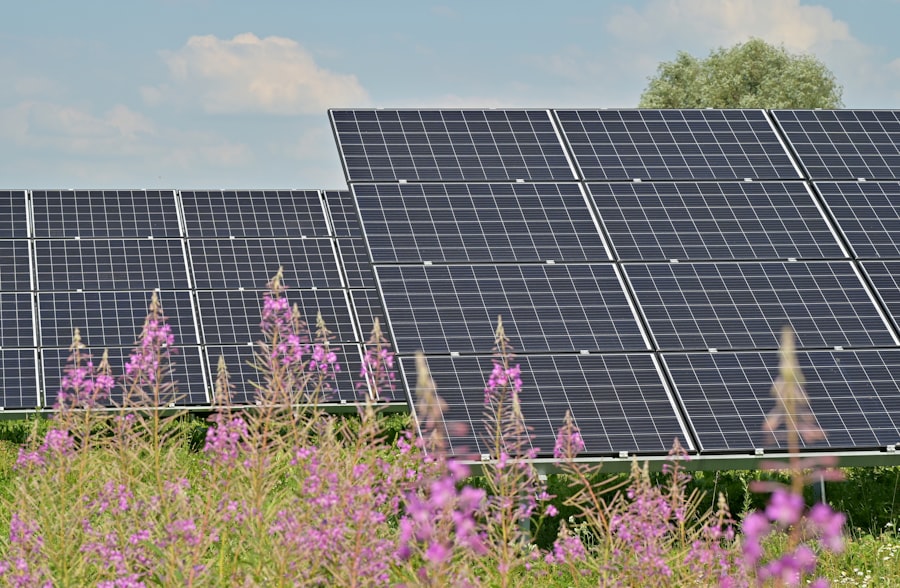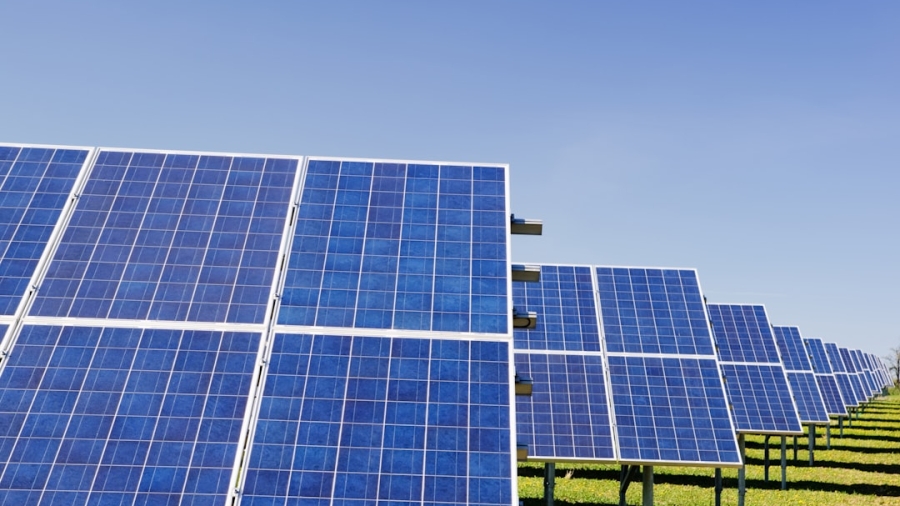In recent years, the global energy landscape has undergone a significant transformation, marked by an increasing shift towards renewable energy sources. This change is driven by a confluence of factors, including the urgent need to combat climate change, the depletion of fossil fuels, and the rising awareness of environmental sustainability. Governments, businesses, and individuals alike are recognizing the importance of transitioning to cleaner energy alternatives that not only reduce greenhouse gas emissions but also promote energy independence and security.
As a result, investments in renewable energy technologies have surged, leading to remarkable advancements in efficiency and affordability. The International Energy Agency (IEA) has reported that renewable energy sources accounted for nearly 30% of global electricity generation in 2020, a figure that continues to rise as more countries commit to ambitious climate goals. The rise of renewable energy is not merely a trend; it represents a fundamental shift in how societies produce and consume energy.
This transition is characterized by a growing recognition that traditional fossil fuel-based energy systems are unsustainable in the long term. The consequences of climate change, such as extreme weather events and rising sea levels, have prompted urgent calls for action from scientists and activists alike. In response, many nations have set legally binding targets for reducing carbon emissions and increasing the share of renewables in their energy mix.
This commitment is further bolstered by technological innovations that have made renewable energy sources more accessible and economically viable. As a result, the renewable energy sector is poised for continued growth, with the potential to create millions of jobs and stimulate economic development while safeguarding the planet for future generations.
Key Takeaways
- Renewable energy is on the rise as a sustainable and clean alternative to traditional energy sources.
- Solar power harnesses the sun’s energy through photovoltaic cells and is becoming more affordable and efficient.
- Wind power taps into nature’s resources by using wind turbines to generate electricity, with large potential for growth.
- Hydroelectric power harnesses the power of water through dams and turbines, providing a reliable and consistent source of energy.
- Geothermal energy harnesses the earth’s heat through underground reservoirs, providing a constant and reliable source of power.
Solar Power: Harnessing the Sun’s Energy
Advancements in Technology
Photovoltaic (PV) technology has made significant strides over the past few decades, resulting in a dramatic decrease in the cost of solar panels and an increase in their efficiency. This has made solar power an attractive option for both residential and commercial applications.
Applications of Solar Power
Homeowners can now install solar panels on their rooftops, allowing them to generate their own electricity while reducing their reliance on traditional power grids. Furthermore, large-scale solar farms are being developed around the world, contributing to national grids and providing clean energy to millions of people. The versatility of solar technology means it can be deployed in various settings, from urban environments to remote areas lacking access to conventional electricity sources.
Environmental Benefits and Future Prospects
The environmental benefits of solar power are profound. By converting sunlight into electricity without emitting harmful pollutants or greenhouse gases, solar energy plays a crucial role in mitigating climate change. Additionally, solar power systems require minimal water for operation compared to fossil fuel plants, which often consume vast amounts of water for cooling processes. This characteristic is particularly important in arid regions where water scarcity is a pressing issue. As governments continue to incentivize solar adoption through subsidies and tax credits, the market for solar technology is expected to expand even further. Innovations such as solar batteries are also enhancing the viability of solar power by enabling energy storage for use during non-sunny periods.
Wind Power: Tapping into Nature’s Resources

Wind power has emerged as one of the most promising renewable energy sources, capitalizing on the natural movement of air to generate electricity. Wind turbines, which convert kinetic energy from wind into mechanical power, have become increasingly prevalent across landscapes worldwide. The growth of wind energy can be attributed to several factors, including technological advancements that have improved turbine efficiency and reduced costs.
Modern wind farms can now produce significant amounts of electricity at competitive prices compared to fossil fuels. Offshore wind farms, in particular, have gained traction due to their ability to harness stronger and more consistent winds found over oceans and large bodies of water. This expansion into offshore wind represents a new frontier in renewable energy development, with countries investing heavily in this technology to meet their energy needs sustainably.
The environmental impact of wind power is largely positive, as it generates clean electricity without emitting carbon dioxide or other harmful pollutants during operation. However, it is essential to consider the potential challenges associated with wind energy development. Concerns about noise pollution, impacts on wildlife—particularly birds and bats—and land use conflicts have been raised by various stakeholders.
Nevertheless, ongoing research and development efforts aim to mitigate these issues through better turbine design and siting practices that minimize ecological disruption. As public awareness of climate change grows and the demand for clean energy increases, wind power is expected to play an increasingly vital role in achieving global sustainability goals. With continued investment and innovation, wind energy has the potential to become a cornerstone of a resilient and low-carbon energy future.
Hydroelectric Power: The Power of Water
Hydroelectric power has long been one of the most established forms of renewable energy, utilizing flowing water to generate electricity. Dams built on rivers create reservoirs that store water, which is then released through turbines to produce power. This method not only provides a reliable source of electricity but also offers benefits such as flood control and irrigation support for agriculture.
Countries like Brazil and Canada have harnessed their abundant water resources to develop extensive hydroelectric systems that contribute significantly to their national grids. The capacity for hydroelectric power generation is immense; it accounts for approximately 16% of global electricity production, making it one of the largest sources of renewable energy worldwide. However, while hydroelectric power offers numerous advantages, it is not without its challenges.
The construction of large dams can lead to significant ecological disruption, including habitat loss for aquatic species and changes in local ecosystems. Additionally, communities may be displaced due to dam construction, raising ethical concerns about social justice and environmental stewardship. As a result, there is a growing interest in developing smaller-scale hydroelectric projects that minimize environmental impact while still providing clean energy solutions.
Innovations such as run-of-the-river systems and micro-hydropower installations are gaining traction as sustainable alternatives that harness water flow without the need for large reservoirs or extensive infrastructure. By balancing the benefits and challenges associated with hydroelectric power, society can continue to leverage this resource while promoting ecological integrity.
Geothermal Energy: Harnessing the Earth’s Heat
Geothermal energy taps into the Earth’s internal heat to provide a reliable source of power and heating. This form of renewable energy is generated from the natural heat stored beneath the Earth’s surface, which can be accessed through geothermal power plants or direct-use applications such as district heating systems. Regions with significant geothermal activity—such as Iceland and parts of California—have successfully harnessed this resource for decades, demonstrating its potential as a sustainable energy solution.
Unlike solar or wind power, geothermal energy offers a consistent and stable supply since it is not dependent on weather conditions or time of day. This reliability makes it an attractive option for baseload power generation, complementing other renewable sources in creating a balanced energy portfolio. Despite its advantages, geothermal energy also faces challenges related to site-specific limitations and potential environmental impacts.
Not all regions possess suitable geothermal resources, which can restrict widespread adoption. Additionally, concerns about induced seismicity—earthquakes triggered by geothermal drilling—have emerged in some areas where geothermal projects are developed. However, advancements in technology are helping to address these issues by improving exploration techniques and enhancing resource management practices.
Enhanced geothermal systems (EGS) represent a promising innovation that allows for the extraction of heat from deeper geological formations that were previously inaccessible. As research continues and investment grows in this sector, geothermal energy holds great promise as a sustainable solution for meeting global energy demands while reducing carbon emissions.
Biomass Energy: Turning Waste into Power

What is Biomass Energy?
Biomass energy is a unique approach to renewable energy that involves converting organic materials, such as agricultural residues, wood chips, and municipal waste, into usable fuel or electricity. This process not only provides an alternative source of energy but also addresses waste management challenges by repurposing materials that would otherwise contribute to landfills.
Conversion Processes and Applications
Biomass can be converted into biofuels like ethanol or biodiesel through various processes such as fermentation or transesterification. Additionally, biomass power plants can generate electricity by burning organic materials directly or using anaerobic digestion to produce biogas that can be used for heating or electricity generation.
Environmental Benefits and Sustainability Concerns
The environmental benefits of biomass energy are multifaceted; it can help reduce greenhouse gas emissions when managed sustainably by offsetting fossil fuel use while promoting carbon neutrality through replanting efforts. However, concerns about land use competition—particularly when biomass feedstocks are sourced from food crops—have sparked debates about sustainability practices within this sector. Striking a balance between biomass production and food security is crucial for ensuring that biomass remains a viable renewable resource without compromising agricultural needs.
The Future of Biomass Energy
As technology advances and best practices are established for sustainable biomass sourcing and production methods, this form of renewable energy has the potential to play an essential role in diversifying our energy portfolio while contributing positively to waste management efforts.
The Future of Renewable Energy Technologies
Looking ahead, the future of renewable energy technologies appears bright as innovation continues to drive advancements across various sectors. The integration of smart grid technologies will enable more efficient management of renewable resources by optimizing electricity distribution based on real-time demand patterns. Energy storage solutions—such as advanced batteries—are also expected to play a pivotal role in enhancing grid reliability by storing excess energy generated during peak production times for use during periods of high demand or low generation capacity.
As these technologies mature and become more affordable, they will facilitate greater adoption of renewables while ensuring stability within electrical systems. Moreover, international collaboration will be crucial in accelerating the transition towards a sustainable energy future. Countries around the world must work together to share knowledge, resources, and best practices in renewable technology development while addressing common challenges such as climate change and resource scarcity.
Public-private partnerships will also be instrumental in driving investment into research and development initiatives aimed at creating innovative solutions that enhance efficiency and reduce costs across all forms of renewable energy generation. As society embraces this transition towards cleaner alternatives, it is essential to foster an inclusive dialogue that considers social equity alongside environmental sustainability—ensuring that all communities benefit from the advancements made within the renewable energy sector while paving the way for a greener future for generations to come.
While exploring the impact of renewable energy technologies on the future, it’s also essential to consider the role of innovative gadgets that complement these sustainable efforts. For instance, the Samsung Galaxy Chromebook, which you can learn more about in this article, offers high efficiency and performance that could be beneficial for professionals in the renewable energy sector. Its advanced features and seamless integration with various applications can enhance productivity and support the management of renewable energy projects.
FAQs
What are renewable energy technologies?
Renewable energy technologies are technologies that harness energy from renewable resources, such as sunlight, wind, rain, tides, waves, and geothermal heat. These technologies are used to generate electricity, heat, and fuel for various applications.
How are renewable energy technologies shaping the future?
Renewable energy technologies are shaping the future by providing sustainable and environmentally friendly alternatives to traditional fossil fuels. They are helping to reduce greenhouse gas emissions, mitigate climate change, and create a more resilient and decentralized energy system.
What are some examples of renewable energy technologies?
Examples of renewable energy technologies include solar photovoltaic systems, wind turbines, hydroelectric power plants, biomass energy systems, and geothermal power plants. These technologies are used to generate electricity and heat from renewable resources.
What are the benefits of renewable energy technologies?
The benefits of renewable energy technologies include reducing greenhouse gas emissions, improving air quality, enhancing energy security, creating jobs, and stimulating economic growth. Additionally, renewable energy technologies can help to diversify the energy mix and reduce dependence on fossil fuels.
What are the challenges associated with renewable energy technologies?
Challenges associated with renewable energy technologies include intermittency, energy storage, grid integration, land use, and resource availability. Overcoming these challenges will be crucial for the widespread adoption and integration of renewable energy technologies.

